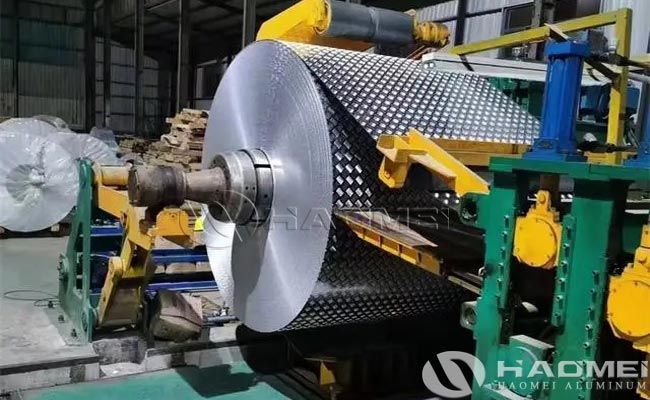How Is Aluminium Checker Plate Produced
Apr-03-2025
Aluminium checker plate is an aluminum alloy plate with a specific texture on the surface. This material is widely used in many fields such as construction, vehicles and ships due to its beautiful, non-slip and wear-resistant properties.

The production process of aluminum checker plate mainly includes the following steps:
- Materials: According to the alloy number produced, calculate the addition amount of various alloy components and reasonably match the raw materials.
- Smelting: Put the matched materials into the furnace for melting, and remove impurities and gases by degassing and slag removal.
- Casting: Under certain conditions, the molten aluminum liquid is cooled and cast into round cast bars of various specifications.
- Extrusion: The heated round cast bars are placed in the mold for extrusion to form the desired shape, and the heat treatment is completed through air-cooled quenching and artificial aging.
- Coloring (optional): If necessary, the aluminum profile can be oxidized to improve corrosion resistance, and then colored using anodizing or other methods.
- Embossing: This is the key step in forming patterns. Mechanical pressing is usually used to form specific patterns on the surface of aluminum checker plates. In addition, chemical etching and other methods can be used to make patterns.
The surface patterns of aluminum checker plates are diverse. The following are some of the more common types:
- Five-bar pattern: It has good anti-slip properties and is suitable for fields such as building floors or platform design.
- Orange peel pattern: Its surface presents a texture similar to orange peel, which is suitable for refrigerators, air conditioners and packaging industries.
- Lentil pattern: It is a common style of anti-slip aluminum plate, used in places with high anti-slip requirements such as carriages, cold storage floors, and workshop floors.
- Spherical pattern: Also known as pearl-shaped pattern, the surface presents small balls, beautiful appearance and high strength, mainly used for outer packaging.
- Compass pattern: Although it has a similar effect to the five-rib pattern, it is not often used.
- Other patterns: Including wavy, water ripples, corrugated, rattan, three-dimensional triangles and other styles, suitable for different decoration needs.
These patterns not only increase the visual effect of aluminum checker plates, but also give them special physical properties, such as enhanced friction or better corrosion resistance. Choosing the right pattern according to the specific application scenario is crucial to maximize the advantages of checkered aluminum plates. For example, floors used in humid environments may prefer five-rib aluminum checker plates with good anti-slip properties; while in occasions where aesthetics are important, spherical aluminum plates with unique aesthetic value can be selected.